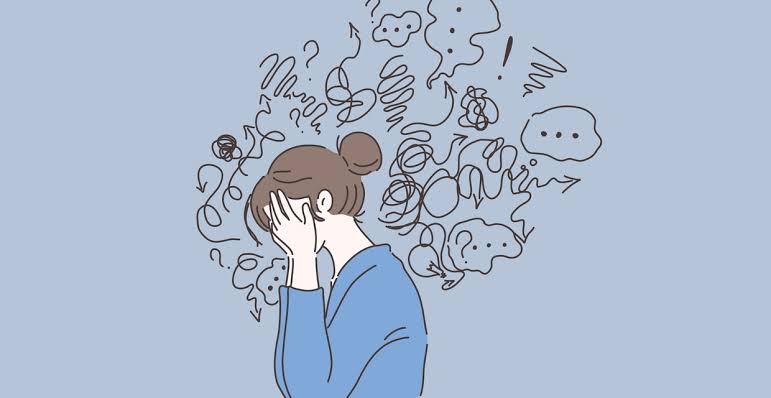What Is the Importance of Giorgio Armani's Fashion Today?
Fashion thrives on images — visual obsessions passed from one enthusiast to another. When I think of Giorgio Armani, two photos immediately come to mind: in one, the designer is adjusting clothes on a mannequin in the window of a shop in Milan; in the other, he’s on the set of Casino with Martin Scorsese and Robert De Niro, showing the American director the look worn by his favourite actor. Separated by at least twenty years, both images share the unmistakable "Armanian" allure of subtle gestures and bold silhouettes.
Legend has it that even now, at the age of 90, Mr Armani personally inspects every look with meticulous care before it steps onto the runway. Honestly, I find that a little hard to believe.
Armani’s fashion has always been a beautiful celebration of simplicity — the power of small but deliberate choices and confident styling in shaping the way men have dressed for the past fifty years. “You have to throw away everything that is superficial and unnecessary. One must strive for simplicity and not grow complacent with elaborate design. Simplicity is the ultimate. I believe that true beauty lies in it,” Armani said in 1990, going somewhat against the common perception of fashion.
In the collective imagination, fashion is glittering, excessive, loud — often a little removed from reality. Armani’s style — or at least part of it — is perhaps the exact opposite. In fact, to be more precise, his fashion has managed to be everything: glamorous and grounded, red carpet and workday alike.
Two campaign photos from 1980 and 1986, respectively.
Courtesy of the brandCourtesy of the brand
The one we focused on for this tribute is the second — the one closest to us — but more importantly, the one that has had the greatest impact on how we talk about menswear at GQ and in everyday life. “I have always wanted and worked to ensure that my fashion instils confidence, dignity, decorum in the wearer. All the revolutions I have made in men’s fashion have always had a structural character and have been based on fabrics and the study of lines and constructions. I have never resorted to special effects, disguises or gags,” Giorgio Armani said in 1996, as men in snug waistcoats, deconstructed jackets and soft high-waisted trousers began appearing in his campaigns. Is there a fashion more grounded in reality?
Indeed, looking back at the hundreds of photos that have told the story of Giorgio Armani’s man over the past fifty years, it’s impossible not to notice the natural ease of the shots — a kind of spontaneity that seems intended as a guide to everyday elegance. In a photo from 1980, a man in a striped shirt carries a bag under his arm. His trousers hug the lower body — neither too tight nor too loose — while the tip of his tie tucks casually inward. If there were no date, it could easily have been taken today. In another from 1986, a model with faintly backcombed hair — perhaps the only true marker of his era — wears a long brown coat over pleated trousers and a grey hoodie. Haven’t we seen that exact look in a dozen contemporary lookbooks?
“My work on the advertising image of the Armani brands has been long, demanding, and conducted with great care. Over the years, starting from very clear ideas, I’ve managed to define a precise and coherent project that fully reflects the message I want to convey through my style,” Armani said in 1997 — perhaps only beginning to grasp the importance those images would come to hold in the years to follow.
There has been much discussion lately about what a fashion campaign should look like, with many criticising today’s campaigns for being too simple. “Where’s the idea?” someone once wrote, commenting on yet another white-background photo released by a major luxury brand. But what if the idea were simply to tell something real?
“When we started — Aldo and I — we had many hopes, a certain recklessness, and a powerful desire to invent a life that resembled our thoughts and dreams — a world we were just beginning to imagine, and which felt very different from the one we were living in. Without saying it explicitly — because the word felt immense, too daunting even to think — we sensed that a new aesthetic was possible. One where elegance was effortless and attitudes were contemporary, where faces conveyed truth and personality like in a portrait, and where all gender stereotypes were overcome,” Armani recalled a few years ago, speaking about the beginnings of the campaigns created with Aldo Fallai.
It’s true that over the years, the aesthetic of those images has changed — at times morphing into something entirely different — but the fact that, fifty years on, those photos and those clothes still feel so relevant and influential is a true Armani miracle.
A few weeks ago, I was having dinner with a colleague from a foreign publication. Sitting at the table, waiting for the dishes to arrive, we did what any fashion journalist worth his salt does — exchanged compliments on what the other was wearing. That evening, I’d chosen to sport a new jacket I’d scouted online during one of my late-night sessions. I love it because it’s lightweight — perfect for the warmer months — but above all because it drapes softly on the body. The jacket is by a Belgian designer, but the influence is so clear that the first thing my colleague asked was, “It’s an Armani jacket, isn’t it?”
“All my work started around the jacket — it was the starting point for everything that came after. Removing all rigidity from the garment and discovering an unexpected naturalness was, shall we say, a strength. I took out the padding from the linings, changed the button placement, and occasionally adjusted the proportions,” Giorgio Armani recalled in 2003, speaking about his most iconic piece and the foundation of his post-modern revolution.
“That I chose to express my desire for change through advertising is no accident. I’ve always seen it as a privileged vehicle for communicating with the public — a way of conveying a style that, over time, has become a lifestyle. In fashion, advertising isn’t something superfluous that may or may not be there — it’s an integral part of the product, because it places it in context, gives it meaning and offers commentary,” Armani said in 2003, reflecting on the importance of imagery in his success.
“The consistency of my style — I loved it, then hated it, and then loved it again, very much! At first it gave me extraordinary strength, but between the late 1980s and early 1990s I experienced it as a cage I was trying to escape from,” Giorgio Armani said in 1997. Today, that very consistency has become the foundation for countless brands that have emerged over the past two decades, all drawing from the Armani aesthetic. Though each has interpreted it in its own way, the starting point remains clear — and unmistakable.
Throughout the feature: clothing, footwear and accessories
Brando Erba @ Row Model Management, Ibra Niakate @ Next.
Piero Nuvoli.
Grooming: Franco Chessa using Weleda Skin Food.
You may also like...
POLITICS:SHOULD POLITICIANS EARN THE MINIMUM WAGE?

What if your president earned the same as a teacher? This bold essay explores the growing divide between political elite...
Erased or Ignored? The Forgotten Female Heroes of African History”

Discover the untold stories of Africa’s forgotten female heroes—from warrior queens and resistance leaders to spiritual ...
Africa's Growth Paradox: Why Booming Economies Aren't Delivering Jobs for Its Youth Majority

Africa's GDP is rising, but youth unemployment persists. Uncover the disconnect between economic growth and job creation...
Emotional Blackmail in African Homes: Love, Guilt, and Obedience

Explore how emotional blackmail shapes relationships in African homes—where love is often tangled with guilt, obedience,...
SOCIAL INSIGHT: IS MARRIAGE STILL RELEVANT IN THE 21ST CENTURY?

Once seen as the ultimate milestone of adulthood, marriage is now being questioned, redefined, and reimagined. This essa...
Urban African Youth and the Rebirth of Cultural Identity

Urban African youth are redefining cultural identity through music, fashion, technology, and activism. From Kenya to Sou...
What Happens to African Girls Who Say No?
(3).jpeg)
Explore the struggles and resilience of African girls who dare to say no to forced marriage, gender-based violence, and ...
The African Dream Is Still to Leave Africa

For many young Africans, the dream isn’t to build Africa — it’s to leave it. This piece explores why the African Dream o...





